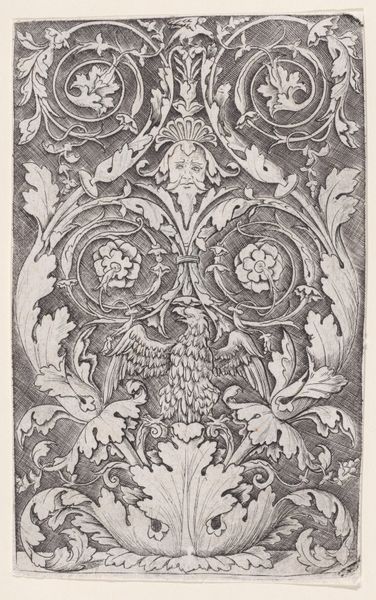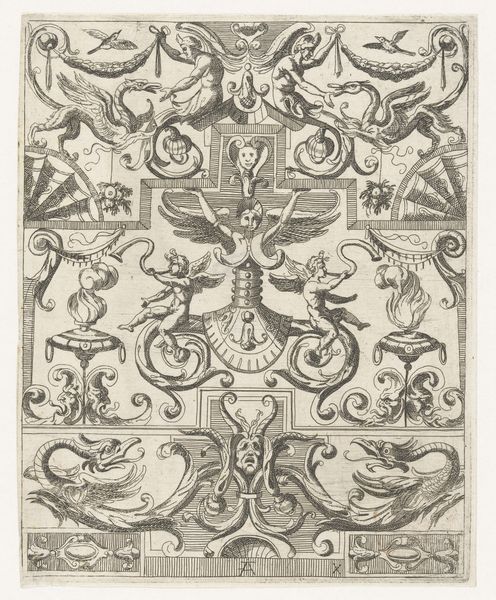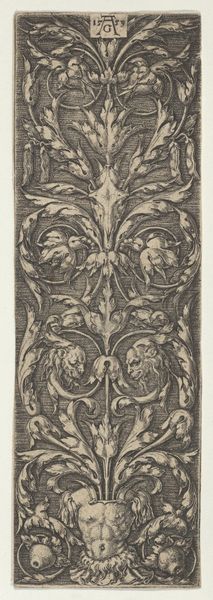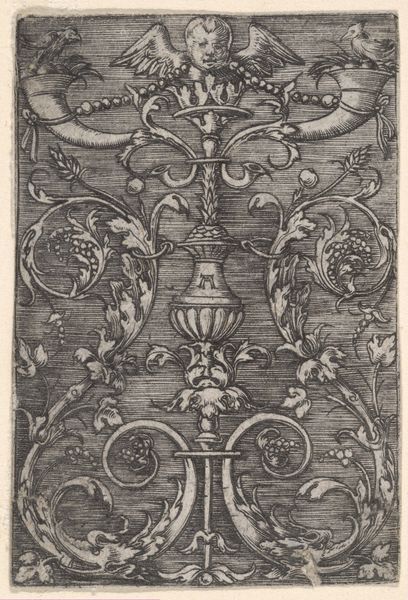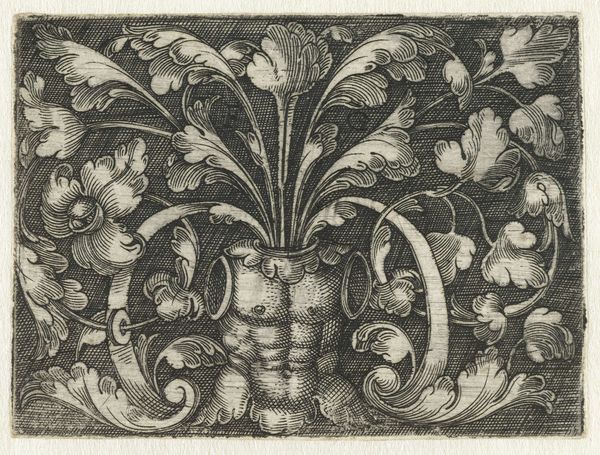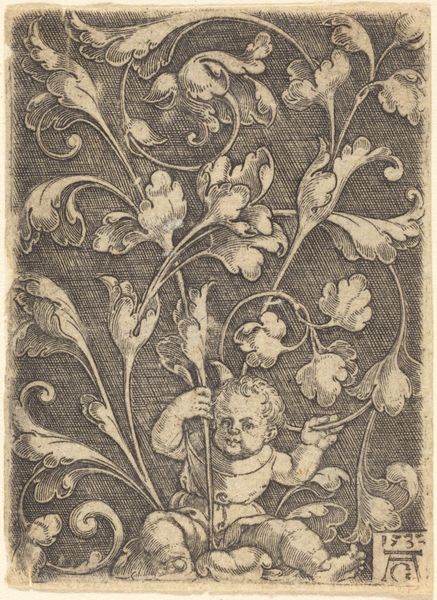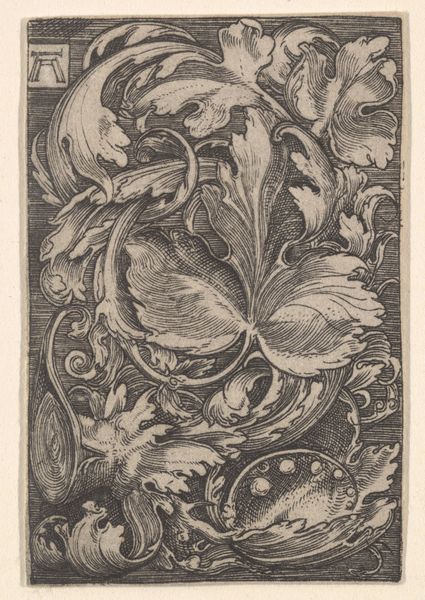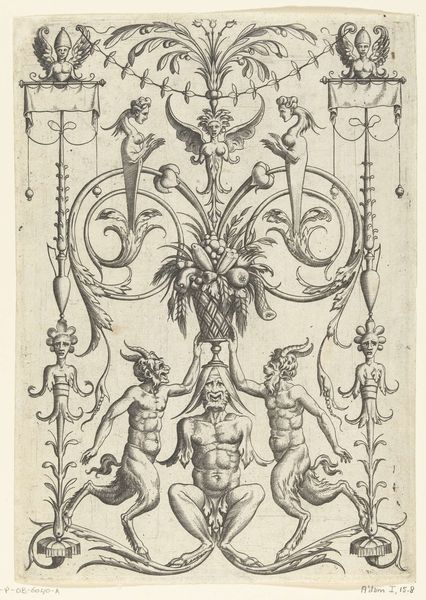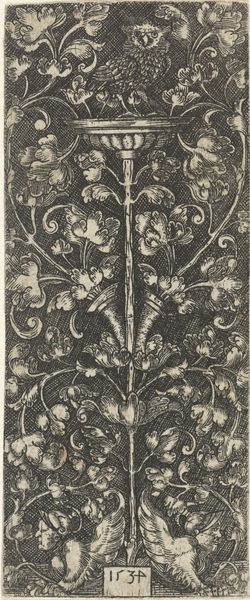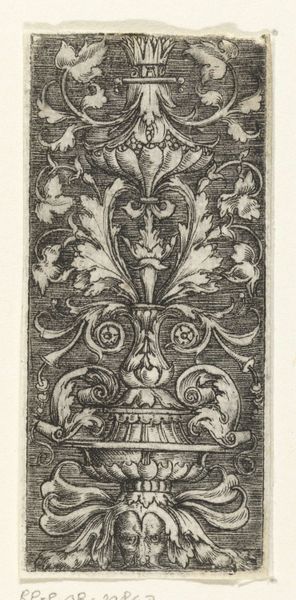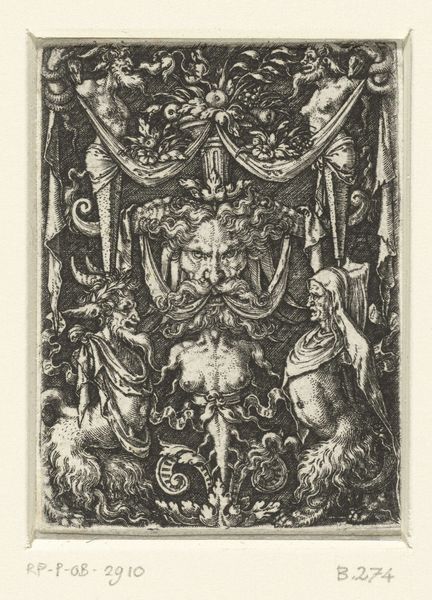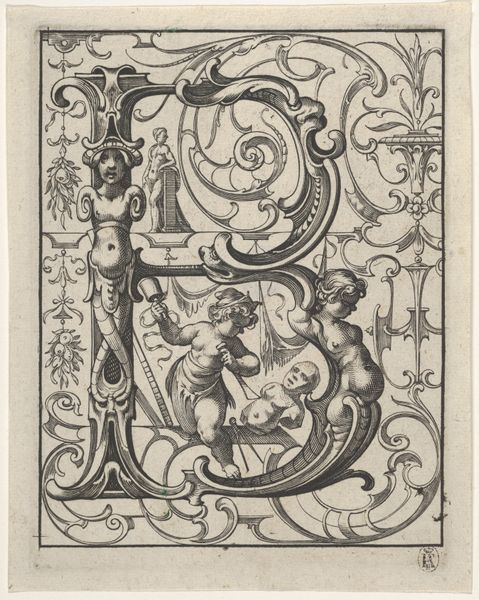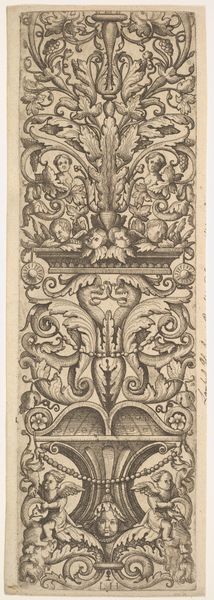
drawing, print, pen, engraving
#
portrait
#
drawing
#
pen drawing
# print
#
figuration
#
11_renaissance
#
geometric
#
line
#
pen
#
northern-renaissance
#
engraving
Dimensions: height 80 mm, width 55 mm
Copyright: Rijks Museum: Open Domain
Editor: Here we have Heinrich Aldegrever's "Man in een harnas waaruit bladranken komen," created in 1529. It's currently housed in the Rijksmuseum. It seems to be a pen and engraving on paper. The figure almost seems trapped within this incredibly ornate vegetal decoration. What do you see in this piece? Curator: What I find interesting is Aldegrever’s challenge to established artistic hierarchies. The very act of committing armor and botanical designs to a readily reproducible print democratizes the image. This removes it from the realm of unique, commissioned artworks only accessible to the wealthy. Editor: So, you're saying it’s less about the man himself and more about how the image was made and circulated? Curator: Precisely. Consider the material reality. Aldegrever used inexpensive materials like paper and ink. He employed easily transferable skills. Engraving, as a method, facilitates mass production. So it enabled wider access to the depiction. The lines almost become more important than the figure. Editor: That's a completely different way to view this image than I originally considered. It shifts the focus from artistry to the societal impact of artistic labor. Curator: Yes, look at the precise labour embedded within this dense engraving. Is it 'high art' or 'craft'? Aldegrever blurs those distinctions by deploying his skills across ornament and figuration. The labor becomes very visible, prompting reflection. Do you agree? Editor: Absolutely. I see it as a blend now, challenging traditional separations. The dense vegetal imagery itself now speaks to production – natural abundance transformed through meticulous human craft. I learned to consider access, reproduction, and distribution beyond subject alone. Thank you! Curator: Indeed! Considering that an object could be about accessibility more than an art, it's a game changer!
Comments
No comments
Be the first to comment and join the conversation on the ultimate creative platform.
